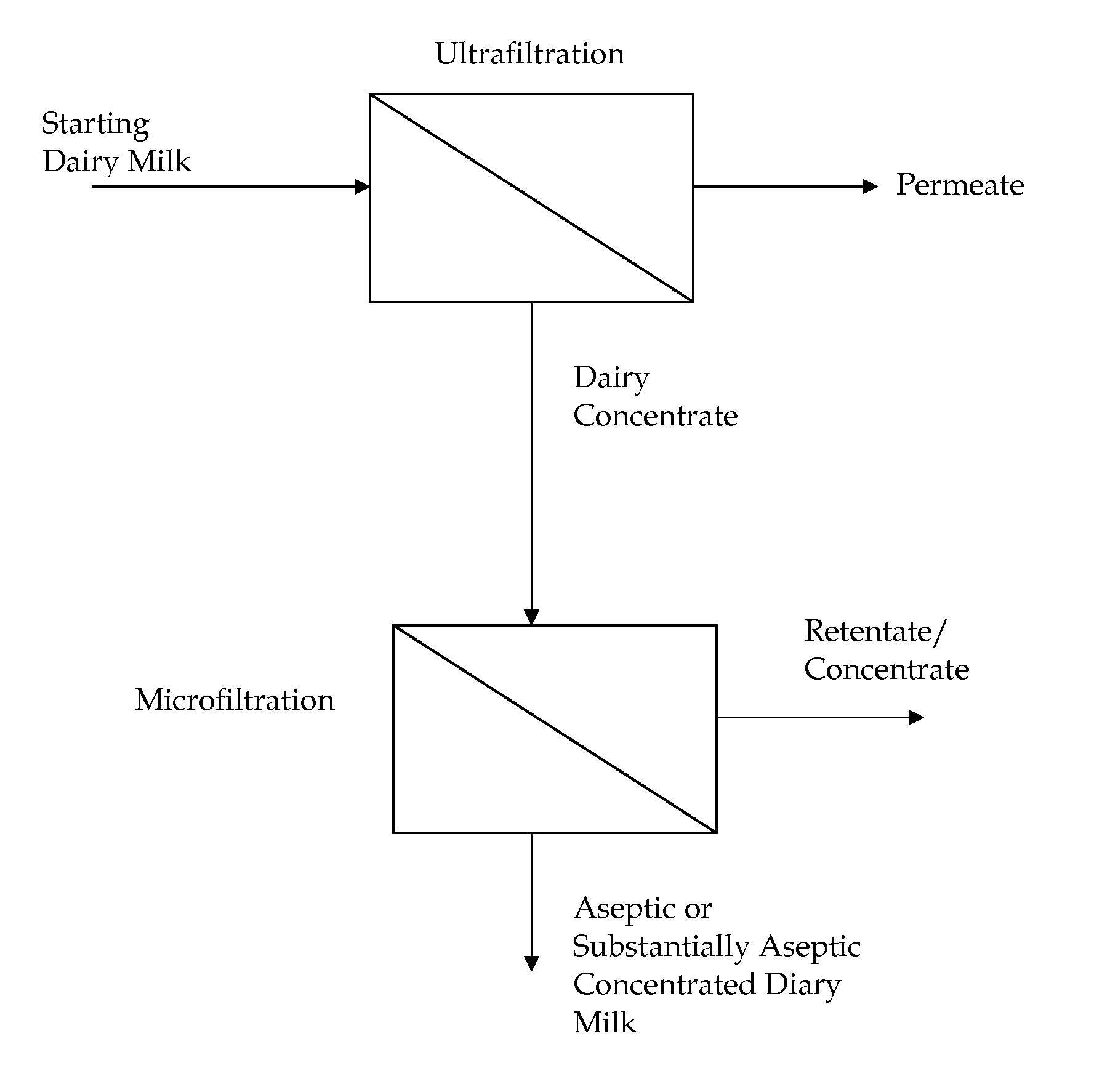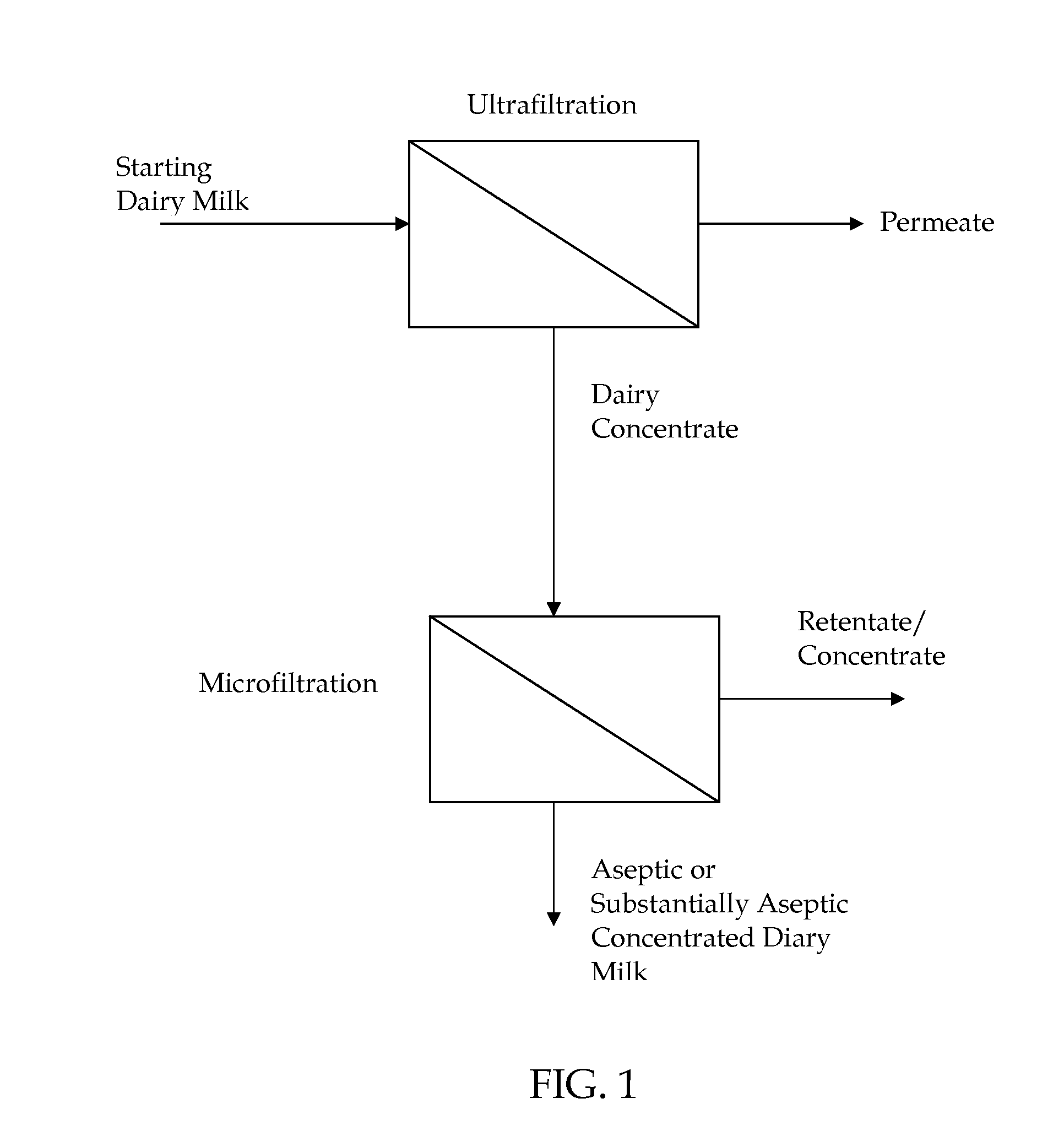Method Of Producing Concentrated Liquid Dairy Products
a concentrated liquid and dairy product technology, applied in the field of concentrated liquid dairy products, can solve the problems of reducing storage and shipping costs, difficult to produce organoleptically pleasing dairy milk, and limiting the usable shelf life of the product, so as to improve the flavor, taste, texture or other properties of the dairy liquid
- Summary
- Abstract
- Description
- Claims
- Application Information
AI Technical Summary
Benefits of technology
Problems solved by technology
Method used
Image
Examples
example 1
[0035]Skim milk (Elgin Dairy, Illinois) (about 3.2 percent protein, about 2.5 percent lactose, and less than about 0.1 percent fat) was concentrated using an ultrafiltration membrane (NCSRT, Inc., North Carolina) with a 10,000 MWCO with diafiltration at 120° F. to produce about 4.4× dairy concentrate / retentate having about 14 percent protein, 1.5 percent lactose, and 2 percent fat. Ultrafiltration occurred at 25-35 psig and at 115-125° F. After ultrafiltration, the dairy concentrate had about 1.2×104 colony forming units per gram (cfu / g) of microbial spores.
[0036]The 4.4× dairy concentrate was then passed through a microfiltration membrane having an average pore size of about 1.4 microns (Membralox Filter, Pall Corporation, NY) at about 120° F. and about 20-30 psig. About 80 pounds of the dairy concentrate was filtered using the microfiltration membrane, which resulted in about 75 pounds of permeate (aseptic concentrated dairy milk) and about 5 pounds of retentate. The permeate had ...
example 2
[0038]Skim milk was concentrated as provided in Example 1. The level of microbial contamination was measured before and after the microfiltration using the procedure of Example 1. The results are provided in Table 3 below. The results illustrate that concentrating the milk prior to microfiltration forms concentrated dairy milk that does not require significant heat treatment prior to subsequent use.
TABLE 3Total BacterialSampleCount (CFU / G)Skim milk before UF1505X milk concentrate after UF but before MF1.2 × 1045X milk permeate after MF at start up5X milk permeate after MF at steady state25X milk permeate after MF at shut down
PUM
 Login to View More
Login to View More Abstract
Description
Claims
Application Information
 Login to View More
Login to View More - R&D
- Intellectual Property
- Life Sciences
- Materials
- Tech Scout
- Unparalleled Data Quality
- Higher Quality Content
- 60% Fewer Hallucinations
Browse by: Latest US Patents, China's latest patents, Technical Efficacy Thesaurus, Application Domain, Technology Topic, Popular Technical Reports.
© 2025 PatSnap. All rights reserved.Legal|Privacy policy|Modern Slavery Act Transparency Statement|Sitemap|About US| Contact US: help@patsnap.com


